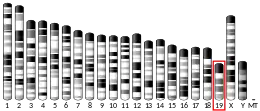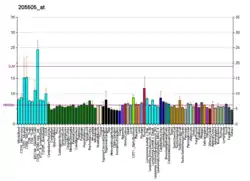| GCNT1 | |||||||||||||||||||||||||||||||||||||||||||||||||||
|---|---|---|---|---|---|---|---|---|---|---|---|---|---|---|---|---|---|---|---|---|---|---|---|---|---|---|---|---|---|---|---|---|---|---|---|---|---|---|---|---|---|---|---|---|---|---|---|---|---|---|---|
| |||||||||||||||||||||||||||||||||||||||||||||||||||
| Identifiers | |||||||||||||||||||||||||||||||||||||||||||||||||||
| Aliases | GCNT1, C2GNT, C2GNT-L, C2GNT1, G6NT, NACGT2, NAGCT2, glucosaminyl (N-acetyl) transferase 1, core 2, glucosaminyl (N-acetyl) transferase 1 | ||||||||||||||||||||||||||||||||||||||||||||||||||
| External IDs | OMIM: 600391 MGI: 95676 HomoloGene: 37486 GeneCards: GCNT1 | ||||||||||||||||||||||||||||||||||||||||||||||||||
| |||||||||||||||||||||||||||||||||||||||||||||||||||
| |||||||||||||||||||||||||||||||||||||||||||||||||||
| |||||||||||||||||||||||||||||||||||||||||||||||||||
| |||||||||||||||||||||||||||||||||||||||||||||||||||
| |||||||||||||||||||||||||||||||||||||||||||||||||||
| Wikidata | |||||||||||||||||||||||||||||||||||||||||||||||||||
| |||||||||||||||||||||||||||||||||||||||||||||||||||
Beta-1,3-galactosyl-O-glycosyl-glycoprotein beta-1,6-N-acetylglucosaminyltransferase is an enzyme that in humans is encoded by the GCNT1 gene.[5][6][7]
This gene is a member of the beta-1,6-N-acetylglucosaminyltransferase gene family. It is essential to the formation of Gal beta 1-3(GlcNAc beta 1-6)GalNAc structures and the core 2 O-glycan branch. The gene coding this enzyme was originally mapped to 9q21, but was later localized to 9q13. Multiple alternatively spliced variants, encoding the same protein, have been identified.[7]
References
- 1 2 3 GRCh38: Ensembl release 89: ENSG00000187210 - Ensembl, May 2017
- 1 2 3 GRCm38: Ensembl release 89: ENSMUSG00000038843 - Ensembl, May 2017
- ↑ "Human PubMed Reference:". National Center for Biotechnology Information, U.S. National Library of Medicine.
- ↑ "Mouse PubMed Reference:". National Center for Biotechnology Information, U.S. National Library of Medicine.
- ↑ Bierhuizen MF, Mattei MG, Fukuda M (Apr 1993). "Expression of the developmental I antigen by a cloned human cDNA encoding a member of a beta-1,6-N-acetylglucosaminyltransferase gene family". Genes Dev. 7 (3): 468–78. doi:10.1101/gad.7.3.468. PMID 8449405.
- ↑ Yeh JC, Ong E, Fukuda M (Mar 1999). "Molecular cloning and expression of a novel beta-1, 6-N-acetylglucosaminyltransferase that forms core 2, core 4, and I branches". J Biol Chem. 274 (5): 3215–21. doi:10.1074/jbc.274.5.3215. PMID 9915862.
- 1 2 "Entrez Gene: GCNT1 glucosaminyl (N-acetyl) transferase 1, core 2 (beta-1,6-N-acetylglucosaminyltransferase)".
Further reading
- Bierhuizen MF, Fukuda M (1992). "Expression cloning of a cDNA encoding UDP-GlcNAc:Gal beta 1-3-GalNAc-R (GlcNAc to GalNAc) beta 1-6GlcNAc transferase by gene transfer into CHO cells expressing polyoma large tumor antigen". Proc. Natl. Acad. Sci. U.S.A. 89 (19): 9326–330. Bibcode:1992PNAS...89.9326B. doi:10.1073/pnas.89.19.9326. PMC 50119. PMID 1329093.
- Bierhuizen MF, Maemura K, Kudo S, Fukuda M (1995). "Genomic organization of core 2 and I branching beta-1,6-N-acetylglucosaminyltransferases. Implication for evolution of the beta-1,6-N-acetylglucosaminyltransferase gene family". Glycobiology. 5 (4): 417–25. doi:10.1093/glycob/5.4.417. PMID 7579796.
- Skrincosky D, Kain R, El-Battari A, et al. (1997). "Altered Golgi localization of core 2 beta-1,6-N-acetylglucosaminyltransferase leads to decreased synthesis of branched O-glycans". J. Biol. Chem. 272 (36): 22695–702. doi:10.1074/jbc.272.36.22695. PMID 9278427.
- Strausberg RL, Feingold EA, Grouse LH, et al. (2003). "Generation and initial analysis of more than 15,000 full-length human and mouse cDNA sequences". Proc. Natl. Acad. Sci. U.S.A. 99 (26): 16899–903. Bibcode:2002PNAS...9916899M. doi:10.1073/pnas.242603899. PMC 139241. PMID 12477932.
- Beum PV, Bastola DR, Cheng PW (2003). "Mucin biosynthesis: epidermal growth factor downregulates core 2 enzymes in a human airway adenocarcinoma cell line". Am. J. Respir. Cell Mol. Biol. 29 (1): 48–56. doi:10.1165/rcmb.2002-0147OC. PMID 12600830.
- Falkenberg VR, Alvarez K, Roman C, Fregien N (2004). "Multiple transcription initiation and alternative splicing in the 5' untranslated region of the core 2 beta1-6 N-acetylglucosaminyltransferase I gene". Glycobiology. 13 (6): 411–8. doi:10.1093/glycob/cwg039. PMID 12626388.
- Chibber R, Ben-Mahmud BM, Mann GE, et al. (2003). "Protein kinase C beta2-dependent phosphorylation of core 2 GlcNAc-T promotes leukocyte-endothelial cell adhesion: a mechanism underlying capillary occlusion in diabetic retinopathy". Diabetes. 52 (6): 1519–27. doi:10.2337/diabetes.52.6.1519. PMID 12765965.
- Smith MJ, Smith BR, Lawrence MB, Snapp KR (2004). "Functional analysis of the combined role of the O-linked branching enzyme core 2 beta1-6-N-glucosaminyltransferase and dimerization of P-selectin glycoprotein ligand-1 in rolling on P-selectin". J. Biol. Chem. 279 (21): 21984–91. doi:10.1074/jbc.M402731200. PMID 15026421.
- Suzuki Y, Yamashita R, Shirota M, et al. (2004). "Sequence comparison of human and mouse genes reveals a homologous block structure in the promoter regions". Genome Res. 14 (9): 1711–8. doi:10.1101/gr.2435604. PMC 515316. PMID 15342556.
- Kikuchi J, Shinohara H, Nonomura C, et al. (2005). "Not core 2 beta 1,6-N-acetylglucosaminyltransferase-2 or -3 but -1 regulates sialyl-Lewis x expression in human precursor B cells". Glycobiology. 15 (3): 271–80. doi:10.1093/glycob/cwi005. PMID 15483269.
- Beum PV, Basma H, Bastola DR, Cheng PW (2005). "Mucin biosynthesis: upregulation of core 2 beta 1,6 N-acetylglucosaminyltransferase by retinoic acid and Th2 cytokines in a human airway epithelial cell line". Am. J. Physiol. Lung Cell Mol. Physiol. 288 (1): L116–24. doi:10.1152/ajplung.00370.2003. PMID 15591039.
- Wang L, Mitoma J, Tsuchiya N, et al. (2005). "An A/G polymorphism of core 2 branching enzyme gene is associated with prostate cancer". Biochem. Biophys. Res. Commun. 331 (4): 958–63. doi:10.1016/j.bbrc.2005.04.022. PMID 15882971.
- Prorok-Hamon M, Notel F, Mathieu S, et al. (2006). "N-glycans of core2 beta(1,6)-N-acetylglucosaminyltransferase-I (C2GnT-I) but not those of alpha(1,3)-fucosyltransferase-VII (FucT-VII) are required for the synthesis of functional P-selectin glycoprotein ligand-1 (PSGL-1): effects on P-, L- and E-selectin binding". Biochem. J. 391 (Pt 3): 491–502. doi:10.1042/BJ20050344. PMC 1276950. PMID 15926890.
- Hagisawa S, Ohyama C, Takahashi T, et al. (2006). "Expression of core 2 beta1,6-N-acetylglucosaminyltransferase facilitates prostate cancer progression". Glycobiology. 15 (10): 1016–24. doi:10.1093/glycob/cwi086. PMID 15932919.
- Kikuchi J, Ozaki H, Nonomura C, et al. (2005). "Transfection of antisense core 2 beta1,6-N-acetylglucosaminyltransferase-1 cDNA suppresses selectin ligand expression and tissue infiltration of B-cell precursor leukemia cells". Leukemia. 19 (11): 1934–40. doi:10.1038/sj.leu.2403951. PMID 16179912.
- Kimura K, Wakamatsu A, Suzuki Y, et al. (2006). "Diversification of transcriptional modulation: large-scale identification and characterization of putative alternative promoters of human genes". Genome Res. 16 (1): 55–65. doi:10.1101/gr.4039406. PMC 1356129. PMID 16344560.
- Cabrera PV, Amano M, Mitoma J, et al. (2006). "Haploinsufficiency of C2GnT-I glycosyltransferase renders T lymphoma cells resistant to cell death". Blood. 108 (7): 2399–406. doi:10.1182/blood-2006-04-018556. PMC 1895562. PMID 16778138.
- Julien S, Grimshaw MJ, Sutton-Smith M, et al. (2007). "Sialyl-Lewis(x) on P-selectin glycoprotein ligand-1 is regulated during differentiation and maturation of dendritic cells: a mechanism involving the glycosyltransferases C2GnT1 and ST3Gal I." J. Immunol. 179 (9): 5701–10. doi:10.4049/jimmunol.179.9.5701. PMID 17947642.
This article is issued from Wikipedia. The text is licensed under Creative Commons - Attribution - Sharealike. Additional terms may apply for the media files.




